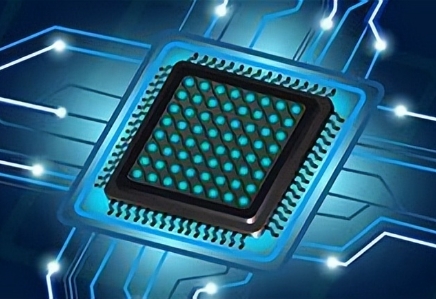In an era where Moore's Law scaling faces physical limits at sub-10nm nodes, advanced packaging technologies have emerged as the critical frontier for unlocking next-generation chip performance. These technologies—ranging from 2.5D interposers to 3D stacked dies—enable unprecedented integration density, bandwidth, and power efficiency by overcoming the limitations of monolithic silicon scaling. With global advanced packaging revenue projected to exceed $150 billion by 2030, this article explores how innovations in 3D integration, through-silicon vias (TSV), and heterogeneous integration are reshaping semiconductors for AI, HPC, and edge computing.
The Shift to "More-than-Moore" Integration
As transistor miniaturization slows, packaging becomes the new performance driver:
Density Boost: 3D stacked dies achieve 10x higher transistor density than 2D layouts;
Bandwidth Leap: 2.5D interposers enable 10TB/s bandwidth between dies, 100x faster than traditional wirebonding;
Power Optimization: Shortened interconnects reduce signal latency by 50% and power consumption by 30%.
Key technologies like flip-chip bonding, through-silicon vias (TSV), and hybrid bonding form the foundation of this paradigm shift, allowing integration of dissimilar materials (silicon, GaN, photonics) on a single package.

Core Technological Breakthroughs
1. 3D Die Stacking: Vertical Integration Revolution
TSV Technology: TSMC’s 3DFabric platform features 10μm-diameter TSVs with 10,000 vias/mm² density, enabling 12-layer die stacks in Apple’s M1 Ultra, doubling GPU performance while reducing die area by 40%.
Hybrid Bonding: IMEC’s 300mm wafer-level hybrid bonding achieves <5nm alignment accuracy, merging logic dies (16nm CMOS) with memory dies (10nm DRAM) to create 1.2TB/s bandwidth "memory cubes" for data center accelerators.
2. 2.5D Interposers: Bridging Diverse Technologies
Silicon Interposers: Samsung’s Exynos 2200 uses a 12nm EUV-processed interposer to connect CPU, GPU, and NPU dies, achieving 40% higher AI throughput than monolithic designs.
Glass Interposers: Corning’s 500μm-thick glass interposers, with 50% lower dielectric loss than silicon, enable 60GHz RF front-ends in 5G smartphones, improving signal efficiency by 25%.
3. System-in-Package (SiP) for Edge Devices
Mixed-Signal Integration: Bosch’s SiP combines MEMS sensors, ARM cores, and wireless radios in a 3mm³ package, enabling 1μW ultra-low-power operation for IoT sensors, extending battery life to 10 years.
Heterogeneous Integration: Intel’s Foveros 3D packaging stacks 10nm CPU dies with 22nm FPGA logic, achieving 2x higher performance per watt in edge AI processors like the NNP-I1000.
Disruptive Applications Across Industries
1. AI and High-Performance Computing (HPC)
Exascale Supercomputers: NVIDIA’s H100 GPU uses 2.5D packaging with 6,144 CUDA cores and 80GB HBM2e, delivering 3.35 petaflops of FP64 performance, critical for climate modeling and drug discovery.
Neuromorphic Chips: Intel’s Loihi 2 employs 3D-stacked ReRAM and CMOS dies, achieving 100x lower energy per neural operation than GPUs, enabling real-time image recognition in drones with <100mW power draw.
2. Advanced Driver Assistance Systems (ADAS)
Multi-Chip Modules: Mobileye’s EyeQ6 system-in-package integrates 7nm vision processors, 22nm radar controllers, and 16nm sensor interfaces, supporting 200TOPS of AI 算力 in a 50mm² package, enabling 4D imaging radar for autonomous vehicles.
Thermal Management Innovation: TDK’s ceramic packaging with embedded heat pipes cools 100W ADAS chips to <85°C, 30% more efficient than traditional organic substrates.
3. Photonics and RF Integration
Silicon Photonics Packaging: Lightmatter’s Envo chip bonds 130nm silicon photonics dies with 7nm CMOS logic via hybrid bonding, achieving 10TOPS/W AI inference for AR glasses, 5x more efficient than pure CMOS solutions.
mmWave Front-Ends: Qorvo’s 28GHz 5G module uses fan-out packaging with embedded antennas, reducing signal loss by 40% and enabling 4Gbps data rates in smartphone hotspots.
Challenges and the Path to Scalability
1. Thermal and Mechanical Stress
Heat Flux Management: 3D stacks generate 100W/cm² heat flux; Fujitsu’s micro-fluidic cooling channels, integrated into package substrates, reduce junction temperatures by 20°C in high-power GPUs.
Warpage Control: SEMI’s 3D Packaging Metrology Standard ensures <5μm warpage in 12-layer die stacks, enabled by AI-driven quality control systems from KLA.
2. Design Complexity and Cost
Multi-Die Verification: Cadence’s 3D-IC toolchain reduces design cycles by 30% through physics-aware co-simulation of electrical, thermal, and mechanical domains.
Yield Enhancement: Samsung’s wafer-level binning technology boosts 3D stack yield from 70% to 92% by selecting only defect-free dies for integration, critical for cost-sensitive consumer electronics.
3. Interconnect Scaling Limits
Post-Silicon Interconnects: IMEC’s 1nm copper TSVs with cobalt liners maintain 10μΩ resistance, enabling 10,000 vias/mm² density for future 20-layer stacks.
New Materials: Graphene-based thermal vias from MIT offer 5x higher heat conductivity than copper, promising to solve thermal bottlenecks in 100-layer 3D ICs.
Future Outlook: The Packaging-Driven Semiconductor Ecosystem
By 2035, advanced packaging will enable:
100-Layer 3D ICs: TSMC’s 3DFabric 2.0 targets 100 die stacks with 1μm TSVs, achieving 100TB/s bandwidth for quantum computing controllers.
Chiplet Ecosystems: Intel’s Universal Chiplet Interconnect Express (UCIe) will standardize die-to-die interfaces, allowing modular chips from multiple vendors to interoperate seamlessly, reducing design costs by 40%.
Sustainable Packaging: Panasonic’s bio-based substrates, derived from plant cellulose, reduce packaging carbon footprint by 60% while maintaining 20GHz signal integrity, aligning with EU Green Deal objectives.
-
Wechat

-
Whatsapp
